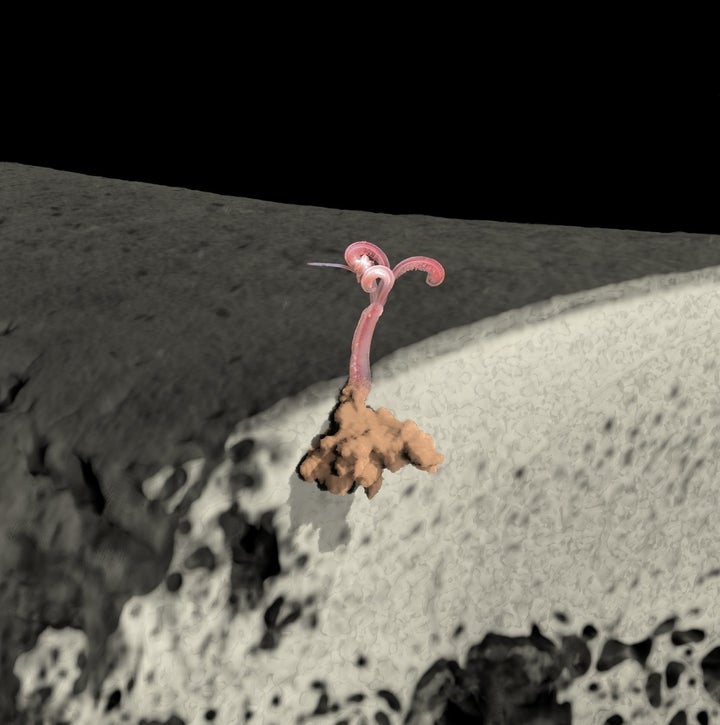
Just blame it on the zombie worms.
An important discovery this month in Italy may help explain certain gaps in parts of the fossil record. British scientist Nicholas Higgs discovered that a three-million-year-old whale bone fossil shows signs of an undersea "zombie" worm that consumes whale bone material before it can become fossilized, reports ScienceDaily.
Higgs and his colleagues' findings, recently published in Historical Biology in a paper entitled "Evidence of Osedax worm borings in Pliocene (~3 Ma) whale bone from the Mediterranean," suggest that the Osedax worm was once present in more locations than previously thought.
Fossilized evidence of Osedax had otherwise only been seen in the Pacific, near Washington state, according to BBC News. The worms still exist to this day and were first seen alive in Monterey Bay, California in 2002, reports ScienceDaily.
The worms are called "zombies" because they do not consume bone with a mouth or stomach, but develop roots that extract nutrients. The Telegraph reports that Osedax are also known as "bone-eating snot flowers."
While the soft worms cannot fossilize themselves, they leave behind "distinctive bulb-shaped cavities" in their hosts, which Higgs identified in the Italian whale bone sample he studied, reported the BBC.
Higgs used CT scans of the fossilized sample to compare its cavities with borings made by modern Osedax. He told London's Natural History Museum, "At first I was sceptical, but the more I investigated the borings the more confident I became that these borings were caused by Osedax, so it was a slow build up of excitement."
Higgs is hopeful that his research may lead to more discoveries. He told ScienceDaily, "There are 20 different species in Monterey, California alone, so it's almost certain there are many more out there. If Osedax were living the Mediterranean three million years ago there's no reason why they aren't living there now."
Earlier this year, scientists in Australia discovered fossils of single-celled organisms that may be 3.4 billion years old and are believed to be the earliest life on earth. In addition to their intrinsic scientific value, fossils often have a high monetary value. A rare dinosaur fossil sold at auction in Paris for €320,000 in October.